Here is your guide to the 19 UNESCO World Heritage Sites in Turkey. From archeological sites to old towns as well as places in nature – we’ve listed all the top UNESCO sites in Türkiye for you.
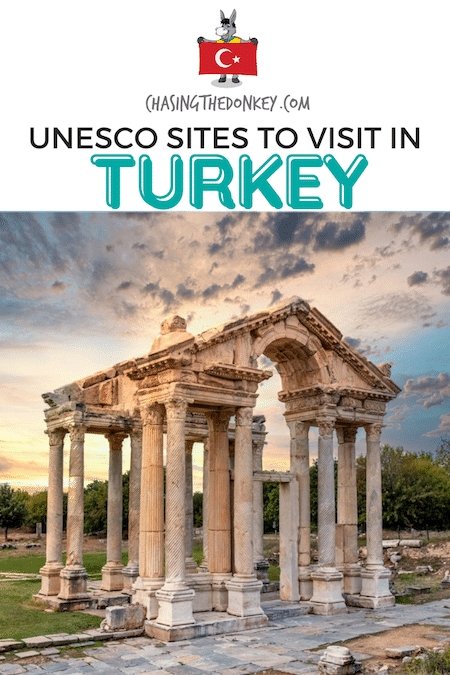
We know that Turkey is an excellent spot for a summer break, but did you know that there are no less than 19 UNESCO World Heritage Sites in Türkiye? There are seventeen cultural sites and two mixed sites. Packed with history and cultural sites to see, Turkey is far more than its south-coast beaches and Istanbul’s nightlife.
Istanbul is a truly unique city, straddling two continents and boasting a rich history and culture. Türkiye is home to some of the world’s most incredible UNESCO World Heritage Sites. From the stunning city of Istanbul to the ancient ruins of Ephesus, there is so much to explore in this fascinating country.
The ancient city of Ephesus is another must-see, with its well-preserved Roman ruins and beautiful setting. Other notable UNESCO World Heritage Sites in Türkiye include the Goreme National Park, an important center of early Christianity, and the Hattusa archaeological site, which was once the capital of the mighty Hittite Empire.
Whether you’re interested in history or culture or want to witness some of the most incredible sites on earth, Türkiye is worth a visit.
If you want to visit the real Turkey, check out some of these UNESCO World Heritage Sites.
Skip Ahead To My Advice Here!
Aphrodisias

Aphrodisias was an ancient Greek city located in southwestern Türkiye. The city was named after the goddess Aphrodite and flourished during the Roman period. Today, the site is a UNESCO World Heritage site and is considered one of the most important archaeological sites in Turkey.
Aphrodisias was built on a plateau overlooking the River Maeander and consisted of two main areas: the acropolis, which housed the temples and public buildings, and the lower town, which was the commercial and residential center. The most impressive monuments at Aphrodisias include the Temple of Aphrodite, the Tetrapylon (a monumental gateway), the Stadium, and the Theater.
- The Temple of Aphrodite was one of the largest temples in the city and was dedicated to the goddess of love and beauty. The temple was adorned with numerous statues and reliefs depicting Aphrodite, and her worshippers
- Tetrapylon was a four-sided gateway decorated with columns that led into the main street of Aphrodisias. The Stadium was used for athletic competitions and could seat up to 30,000 spectators
- The theater was used for both theatrical performances and gladiatorial games. It could seat up to 20,000 people in its tiered seats
Today, visitors can explore the ruins of Aphrodisias and see many of its impressive monuments. The site also has a museum housing artifacts found during excavations at Aphrodisias.
Historic Areas Of Istanbul
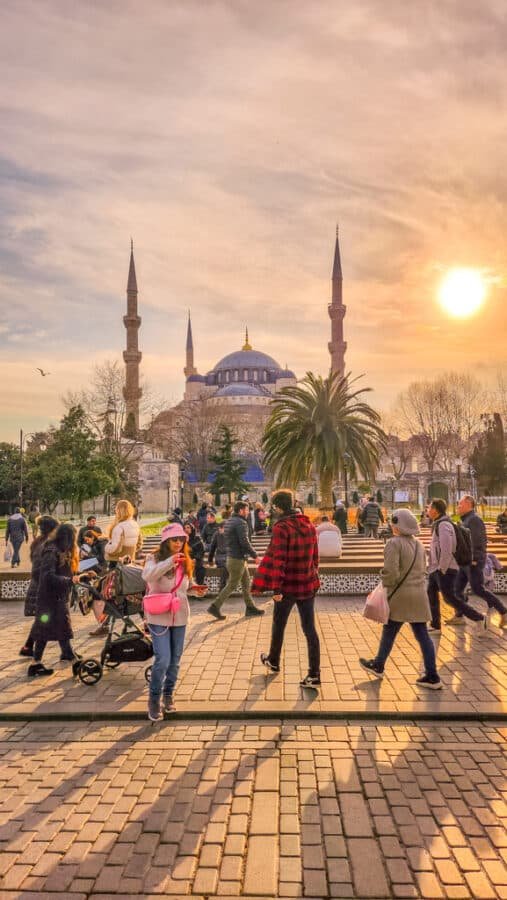
Much of Istanbul is steeped in history, but several sections are UNESCO named. Most notably, the Golden Horn, located on the Bosphorus and encompassing Hagia Sophia, dating back to the 6th century, and the Hippodrome of Constantine, to name just two.
Ephesus
Ephesus was an ancient Greek city on the Ionia coast in present-day Türkiye. It was one of the 12 cities of the Ionian League during the Classical Greek era. In the Roman period, it was for many years the second-largest city of the Roman Empire, ranking behind Rome itself.
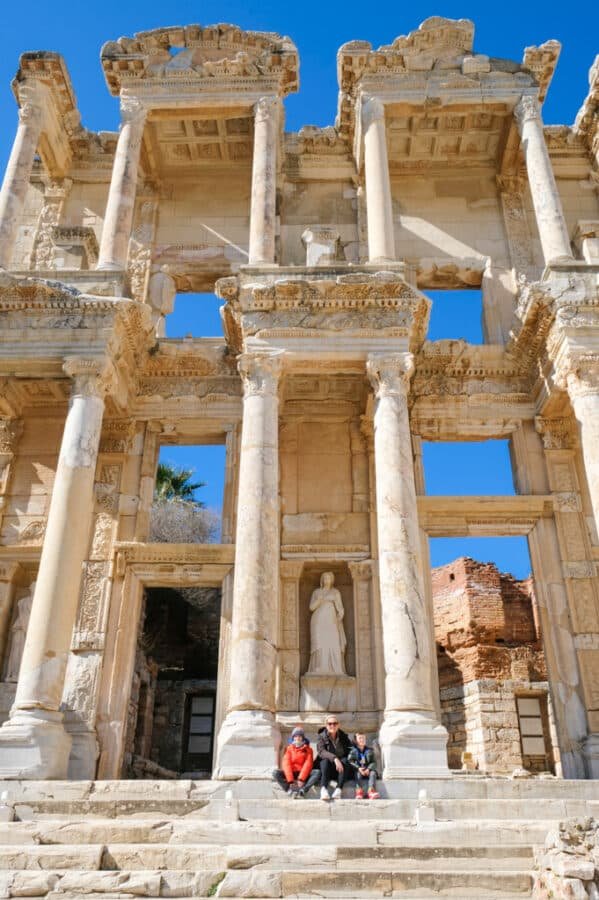
Ephesus was one of the most important trading centers in the region and served as a gateway between Asia and Europe. The city was famed for its Temple of Artemis, one of the Seven Wonders of the Ancient World. The city was also home to a large amphitheater and other impressive buildings.
Archaeologists have recently uncovered a wealth of information about Ephesus and its history. The ancient city is now a UNESCO World Heritage Site and is a popular tourist destination.
Please read our guide to Ephesus here.
Archaeological Site Of Ani

Ani is an ancient city that dates back to the 10th and 11th centuries. It is located on a vast ravine that overlooks Armenia. Ani is pretty difficult to get to unless you’re a keen explorer, but you should certainly put it on your bucket list.
At the time, it was the capital of the Armenian Kingdom, and money flowed in thanks to its proximity to the Silk Road trade route. The city began to decline in 1319, thanks to a massive earthquake and an invasion from the Mongols.
Brands We Use And Trust
Hierapolis-Pamukkale
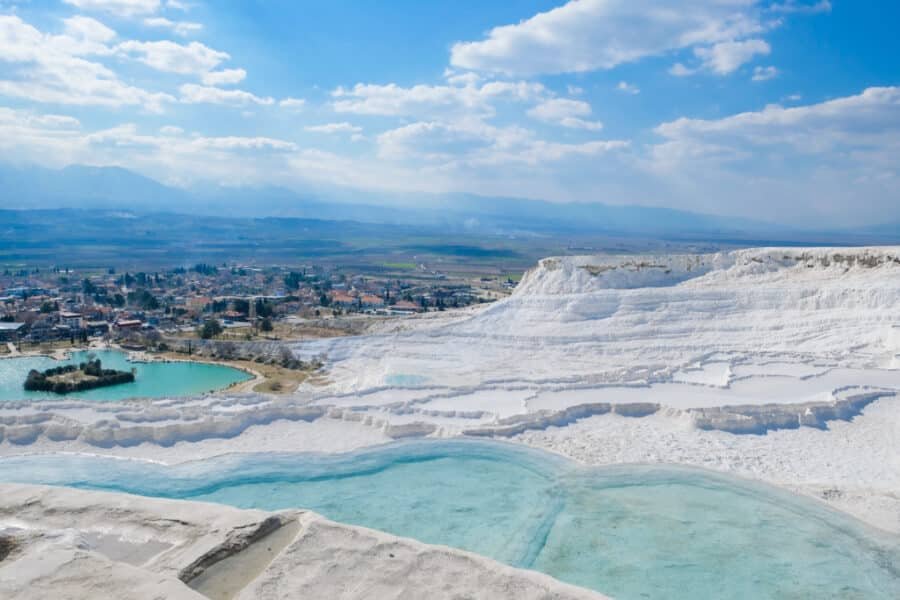
Hierapolis and Pamukkale are two of Turkey’s most incredible UNESCO World Heritage Sites. Hierapolis, an ancient Greco-Roman city, is home to some of the most well-preserved ruins in the country.
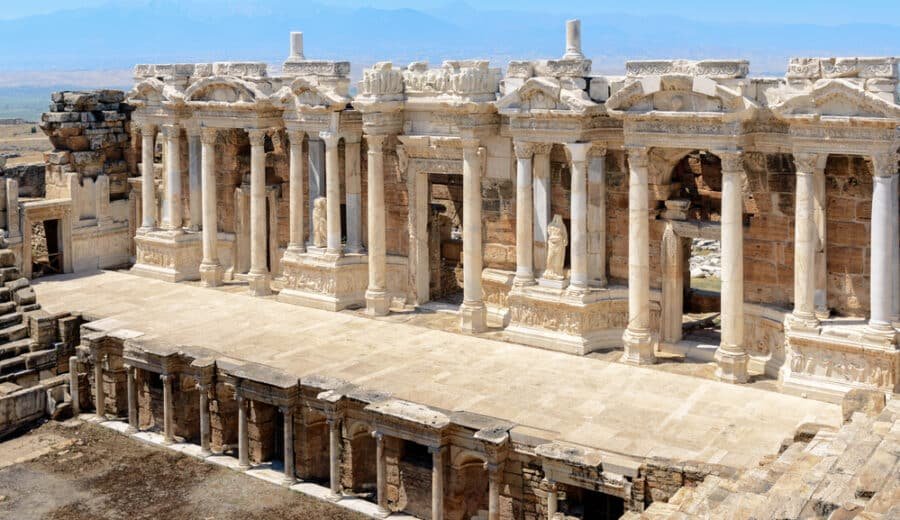
The site’s highlight is the magnificent theatre, which could once seat up to 25,000 people. Meanwhile, Pamukkale is a natural wonder of hot springs and travertines (calcium deposits). The waterfalls cascading down the hillside are genuinely breathtaking.
Arslantepe Mound
Arslantepe is an important archaeological site that is located close to Malatya in the eastern-central part of the country. Evidence from the site shows residents as far back as the 6th century BC, going as far up as the medieval era. The site also has early Bronze Age artifacts and a huge Royal Tomb complex.
Archaeological Site Of Troy
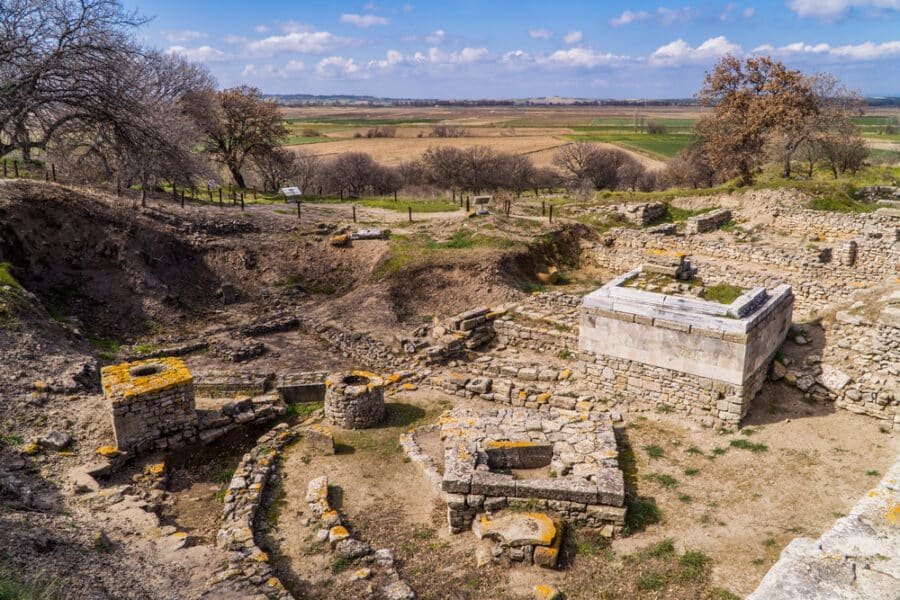
Yes, Troy is actually in modern-day Türkiye! It is located in the country’s far northwest, close to Canakkale. With more than 4000 years of history to its name, Troy is one of the most popular spots to visit.
The story of Troy has been told repeatedly on TV shows and in Hollywood blockbusters. The site attracts visitors from all over the world, with remains that are still extremely significant.
Bursa And Cumalikizik – Birth Of The Ottoman Empire
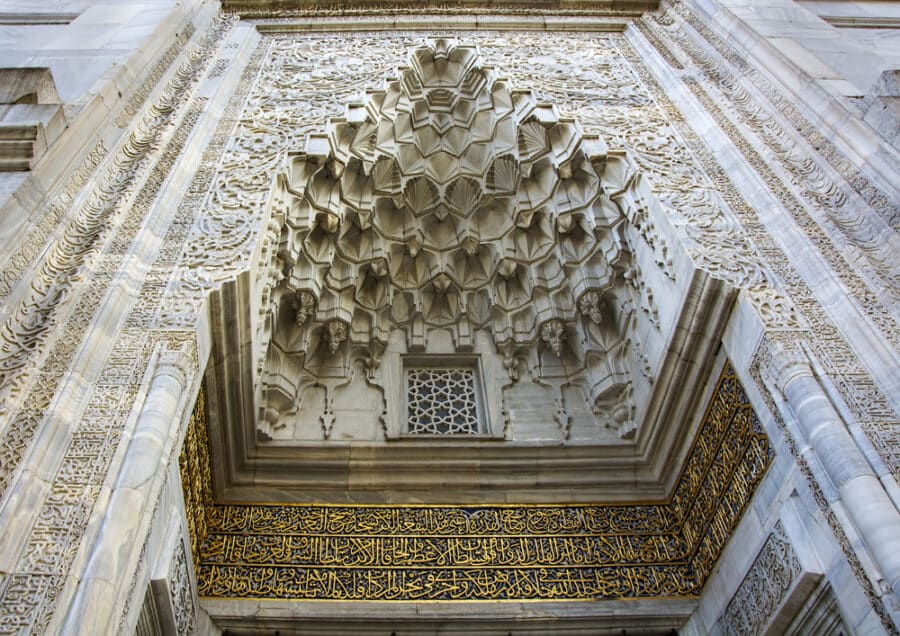
Bursa is a large city in the country’s northwest, close to Istanbul. It is also a city connected very heavily with the early beginnings of the Ottoman Empire. The UNESCO listing is connected to eight different sites across the city and the nearby village of Cumalikizik. All areas show evidence during the 14th century and the establishment of the Ottomans.
Nemrut Dag
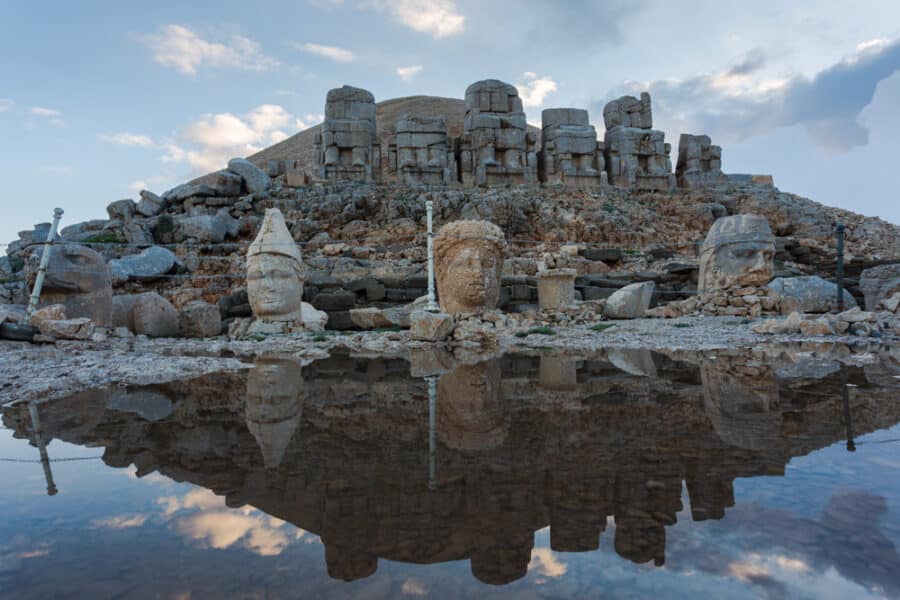
Nemrut Dag is a mountain in southeastern Turkey, notable for its summit, where a number of large statues are erected. The name Nemrut Dag means “mountain of the prophet”. It is the highest peak in the province of Kahramanmaraş. The mountain lies 40 km north of Kahramanmaraş city center.
The statues on Mount Nemrut are from the Kingdom of Commagene, which existed from 160 BC to 72 AD. The kingdom was ruled by an Armenian dynasty and was centered around the areas of modern-day Türkiye and Syria. The kings of Commagene built a number of monuments and temples on Mount Nemrut, including a tomb for themselves. The most striking feature of Mount Nemrut are the giant statues that stand at the peak of the mountain.
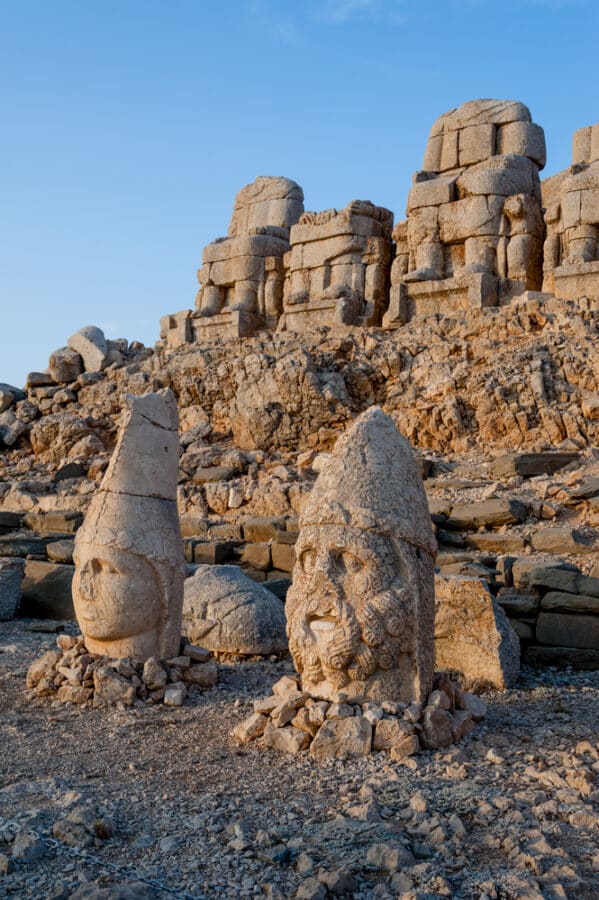
These statues were carved in the image of King Antiochus I, his ancestors, and various Greek and Persian gods. The statues range in height from 7 to 10 meters (23 to 33 feet). The site also has two lion statues, each about 3 meters (9.8 feet) tall, which flank a staircase leading up to the main platform with the statues. In addition, there are a number of smaller statues and reliefs scattered around the site. Mount Nemrut is one of Turkey’s most popular tourist destinations due to its unique archaeological site and stunning views. Visitors can hike to the top
City Of Safranbolu
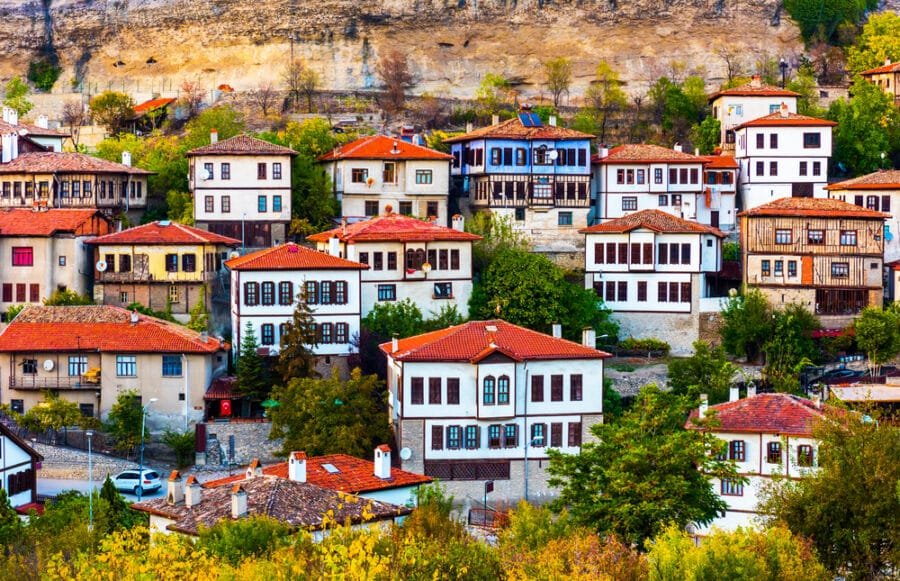
The ancient city of Safranbolu dates back to the 13th century and is located close to Karabuk in the Black Sea region. Safranbolu was an essential stop on the trade route from east to west and is also home to several notable buildings, including the Old Mosque and the Old Bath.
Diyarbakir Fortress And Hevsel Gardens Cultural Landscape
The city of Diyarbakir is located in southeast Türkiye, along the Upper Tigris River. The city is surrounded by walls and a massive fortress spanning a vast 5.8km. They’re dotted with many towers, gates, and inscriptions. The area around Diyarbakir city also dates back to the Hellenistic period, and many important archaeological finds have been discovered.
Gobekli Tepe
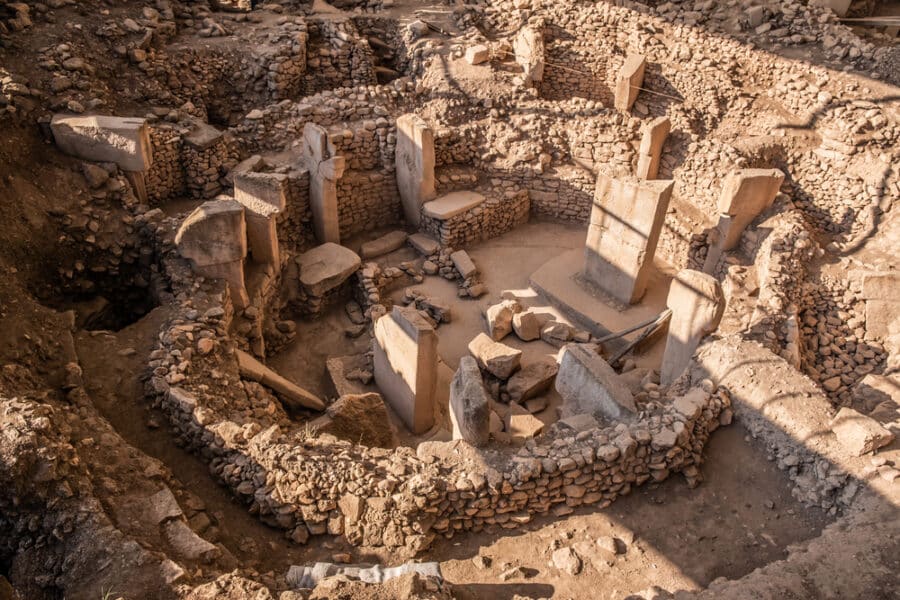
Located close to Sanliurfa in the southeast of the country, Gobekli Type is an essential Neolithic archaeological site dating back to around 8000 BCE. The site is home to a vast circular structure held up by stone pillars. These are also known to be the oldest megaliths in the world.
Great Mosque And Hospital Of Divrigi
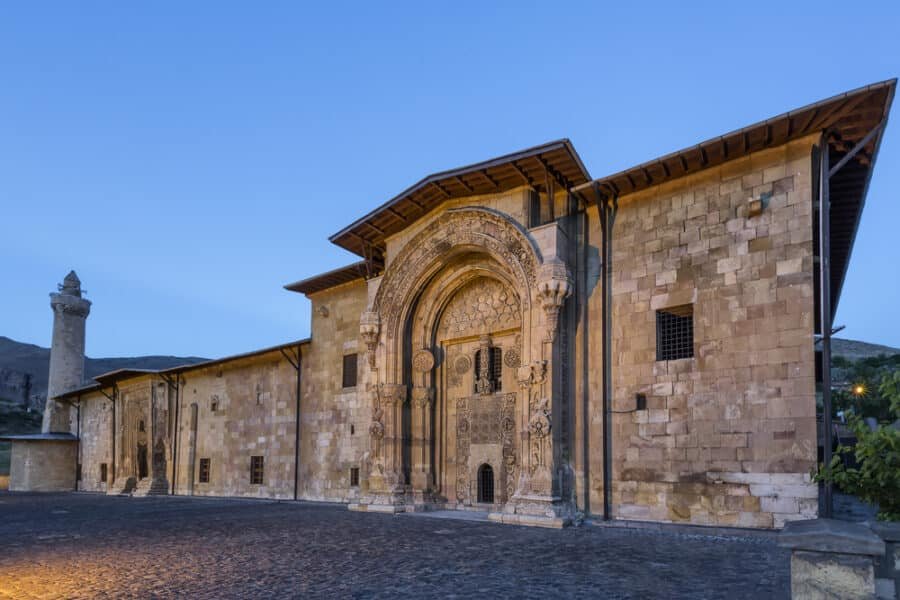
The Great Mosque and Hospital of Divrigi is a magnificent examples of early Anatolian Seljuk architecture. This vast complex, built in 1228-29 by the local ruler Mengücek Ahmet Shah, comprises a mosque, a hospital, and a series of ancillary buildings.
The mosque is notable for its double-shell dome, while the hospital is famed for its beautifully carved portal. The complex as a whole is remarkable for its size and scale, as well as for its harmonious overall design.
The Great Mosque is the largest and most important building in the complex. It measures some 60 meters in diameter and is covered by two massive domes. The outer dome, which rests on an octagonal base, is made of brick and stone; it weighs an estimated 400 tons. The inner dome, which has a diameter of 23 meters, is made entirely of wood. This unique construction technique was necessary because the mosque was built on top of a hillock; the double-shell dome ensured that the building would be stable despite the uneven foundation.
The mosque’s interior is no less impressive than its exterior. The central space is decorated with lavish geometrical patterns in stucco, while the mihrab (prayer niche) is adorned with beautiful calligraphy executed in tilework. The qibla wall (the wall that faces Mecca) also contains an inscription written by Mengücek Ahmet Shah himself. This lengthy text
Hattusha – The Hittite Capital

The ancient city of Hattusha was the capital of the Hittite empire and is now a UNESCO World Heritage site. The city was founded around 1800 BCE and flourished until 1200 BCE. It was an important center of trade and politics, as well as a hub of art and culture. The city’s decline began around 1180 BCE, and it was eventually abandoned altogether.
Hattusha’s importance lies in its role as the capital of the Hittite empire. The Hittites were one of the major political powers in the ancient world, and their empire extended from Anatolia to Syria. Hattusha was at the center of this empire, and its decline coincided with the decline of the Hittite power.
The city is also notable for its art and architecture. The royal palace, for example, was decorated with reliefs depicting scenes from Hittite mythology. Other buildings in the city include temples, fortifications, and public baths. Hattusha’s art style is unique and distinct from other contemporary cultures. Today, Hattusha is a UNESCO World Heritage site and a popular tourist destination. Visitors can see the ruins of the ancient city, as well as museums dedicated to Hittite culture and history.
Neolithic Site Of Catalhoyuk
The Neolithic Site of Catalhoyuk is a UNESCO World Heritage site located near the modern city of Konya in south central Türkiye. The site is a well-preserved example of a Neolithic settlement and provides insight into the lives of the people who lived there.
The site was first discovered in the late 19th century, and excavation began in the early 20th century. The settlement was occupied for over 1,000 years, from around 7500 BCE to 5700 BCE. During this time, the population of the settlement grew to as many as 2,000 people.
The architecture of the site is unique, with houses built close together and interconnected by tunnels and passageways. This allowed for easy movement between houses and helped keep the houses warm in winter and cool in summer. The people of Catalhoyuk were skilled artisans, and their pottery and other artwork have been found at sites all over Europe and Asia. They were also expert farmers, raising crops such as wheat, barley, peas, lentils, and flax.
The Neolithic Site of Catalhoyuk is an important archaeological site that provides insight into the lives of our ancestors.
Pergamon And It’s Multi-Layered Cultural Landscape
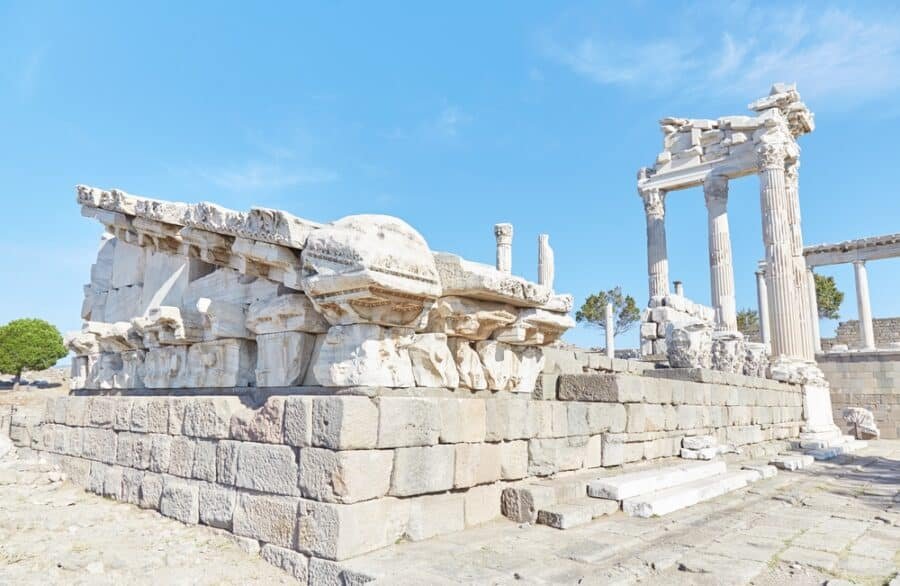
In Izmir Province, Pergamon is an archaeological site that sits high up on the hillside. The Acropolis of Pergamon was considered the capital of the Hellenistic Attalid, and there are many temples and old ruins to explore. The Kybele Sanctuary is also part of this site, as well as old burial centers and plenty of evidence that points back to different eras, including Byzantine, Roman, and Ottoman.
Move This Adventure To Your Inbox & Get An Instant Freebie

No spam. Unsubscribe at any time.
Selimye Mosque And Its Social Complex
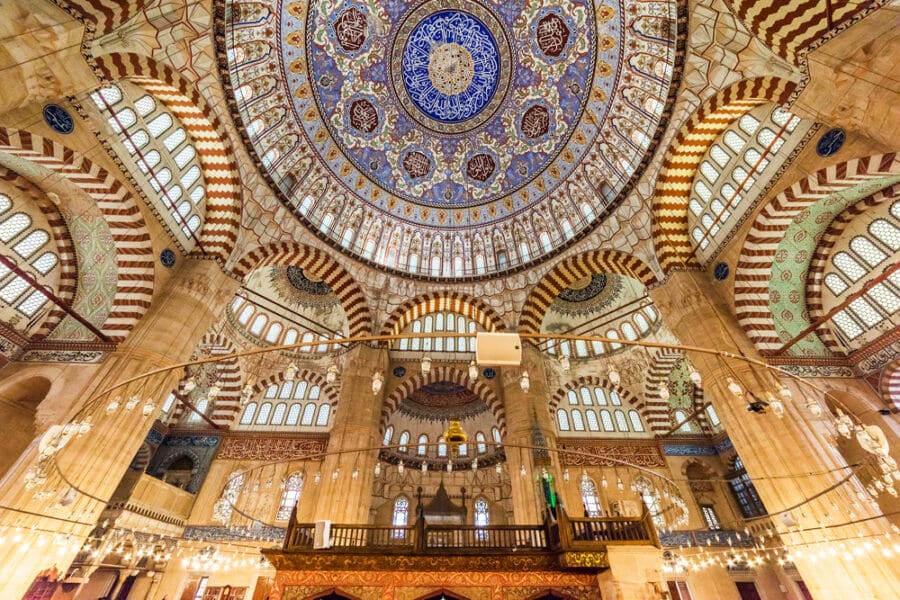
Selimye Mosque is a beautiful example of Ottoman architecture in Edirne in the northwest corner of Turkey. Edirne used to be the Ottoman Empire’s capital, and this work dates back to the 16th century. It is the work of Sinan, one of the most decorated architects of his time. The surrounding complex is also fascinating, with a religious school, market, and library.
Xanthos-Letoon
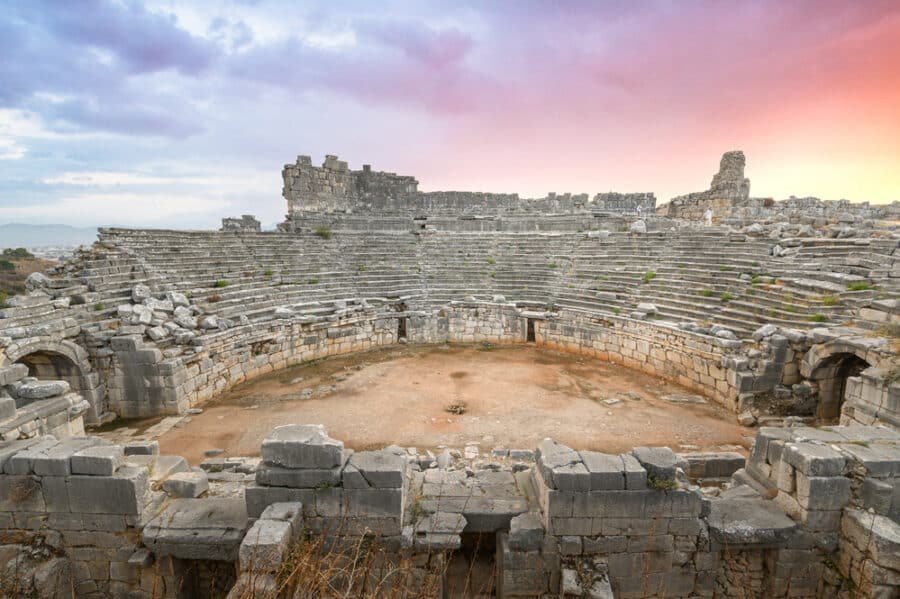
The ancient city of Xanthos-Letoon is a UNESCO World Heritage Site located in Türkiye. The site includes the ruins of the city of Xanthos and the nearby sanctuary of Letoon.
The city of Xanthos was an important center of the Lycian civilization. The city was destroyed by fire in the late 4th century BC but was later rebuilt by Alexander the Great. The ruins of the city include a theater, agora, and temples dedicated to Artemis and Athena.
The sanctuary of Letoon was an important religious site for the Lycians. It consisted of three temples dedicated to Apollo, Artemis, and Leto, the mother of Apollo and Artemis. The ruins of the sanctuary include an altar, stoa, and nymphaeum.
Goreme National Park And The Rock Sites Of Cappadocia
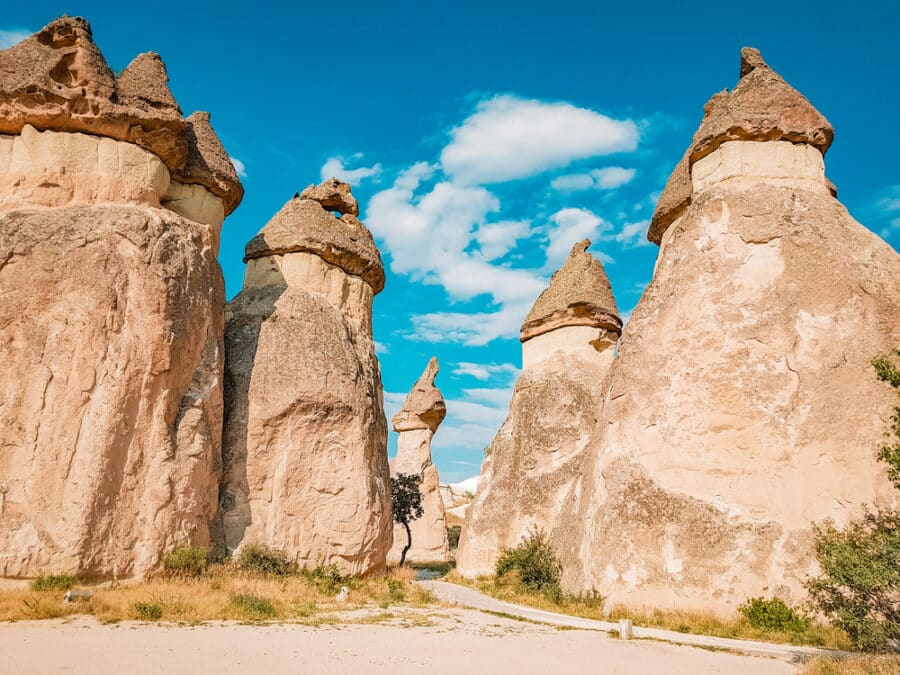
You will undoubtedly have seen Goreme National Park countless times online and on TV. This is the place where the famous hot air balloons fly over in Cappadocia. This part is considered a geological wonder with huge and unusual rock formations. Cappadocia itself is included on the list, with cave buildings and evidence of habitation by humans dating back to the 4th century.
- The Do’s And Don’ts Of Visiting Türkiye
- Best Places To Visit In Turkey For Every Type Of Traveler
- How To Get From Istanbul To Cappadocia
- Best Nightlife In Istanbul
- Day Trips To Take From Istanbul
- Greek Island Day Trip From Southern Türkiye
- What To Know When Traveling To Turkey During COVID-19
- Best Beaches To Visit In Türkiye
- Ephesus, UNESCO World Heritage Site
- How To Get From Pamukkale To Cappadocia
- Best Islands In Turkey To Visit This Summer
- Things To Do In Cappadocia



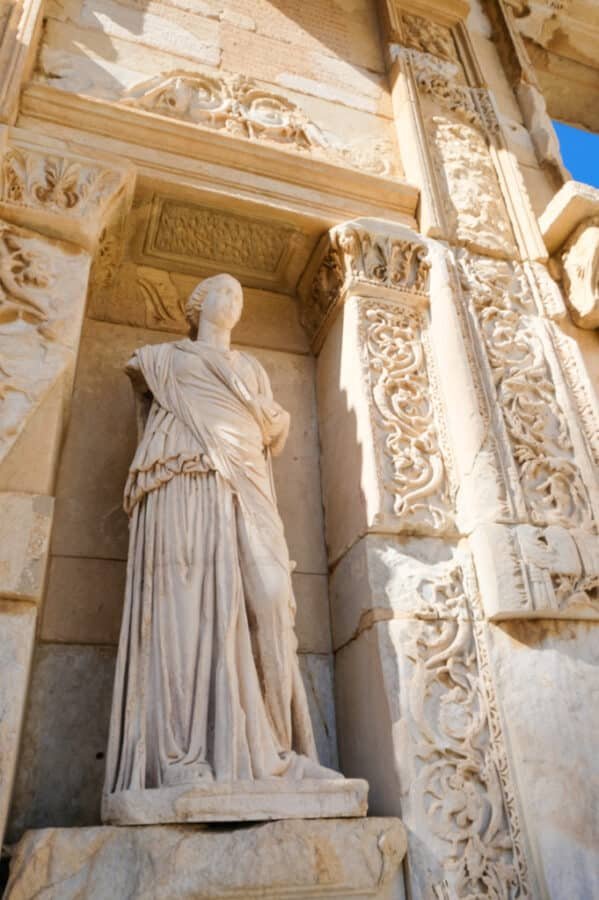

Thank you so much provide this article
Thanks for sharing such valuable content with us.
Thanks for sharing a valuable blog.
Thank you so much such a valuable information